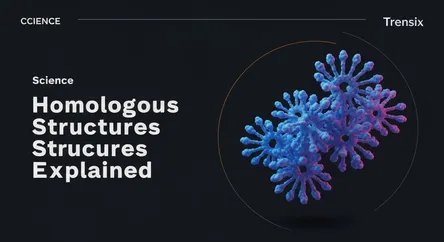Science
Homologous Structures Explained

Discover homologous structures, the similar anatomical features in different species that point to a shared common ancestor and divergent evolution.
What is it?
Homologous structures are similar physical features in different species inherited from a common ancestor. While the underlying anatomy is alike, these structures often serve vastly different functions. A classic example is the forelimb of vertebrates. The arm of a human, the leg of a cat, the flipper of a whale, and the wing of a bat all share a similar bone structure. This blueprint, passed down from a shared ancestor, was modified over millions of years through divergent evolution to suit different needs like grasping, walking, swimming, or flying, showcasing a shared evolutionary past.
Why is it trending?
The concept of homology is a cornerstone of evolutionary biology and remains a key topic in science education. It provides compelling evidence for the theory of evolution by common descent. As new fossils are discovered and genetic sequencing becomes more advanced, scientists continually find new homologous relationships, from skeletal features to DNA sequences. This keeps the topic relevant in discussions about the tree of life and how different species are interconnected, constantly reinforcing our understanding of life's shared history on the planet.
How does it affect people?
Understanding homologous structures affects our view of the natural world and our place in it. It demonstrates our deep evolutionary connection to a vast array of organisms. This knowledge is not purely academic; it has practical applications. By studying homologous genes and anatomical systems in model organisms like mice, scientists gain critical insights into human health and disease. This research underpins medical advancements and fundamentally shapes our scientific understanding of biodiversity and our own shared ancestry on Earth.